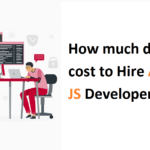Weather data is a necessity for school projects, websites, apps, and desktop programs. You can find hundreds of solutions out there but they charge a premium and are not affordable. Most of the mainstream weather apps don’t offer API services, so you can’t integrate them into your applications. You can find several services online that offer weather data and API services, but they are super expensive and don’t fall under the “budget” category. You can keep on searching for a weather API service provider and I would like to lift off the burden a little.
What is Visual Crossing?
 Visual Crossing is a well-known weather data and weather API provider, and they have been in the business for two decades. VC made an impact in the industry due to the shaping with the client’s feedback. VC takes up the majority of the market share, and all thanks go to the pricing structure. I will review the Visual Crossing and the tools added in the package, so you can make clever decisions.
Visual Crossing is a well-known weather data and weather API provider, and they have been in the business for two decades. VC made an impact in the industry due to the shaping with the client’s feedback. VC takes up the majority of the market share, and all thanks go to the pricing structure. I will review the Visual Crossing and the tools added in the package, so you can make clever decisions.
Go Through Weather History
You can look for weather history and find out what was the temperature on a particular day. The data has key points such as precip, temperature, sustained wind, and a chart. You don’t have to dive deeper into numbers only and compare the stats in a chart. The developers have worked on the user interface and it makes it easier for an average user to work around it. Let me show you how to check out the weather history in the Visual Crossing dashboard.
- Sign in to the account and click on “Weather History” from the main menu.
Enter the location name, then click on the search icon.
 3. The weather history shows up on the screen and confirms the location name.
3. The weather history shows up on the screen and confirms the location name.
 4. You can take a look at the chart and find out various metrics.
4. You can take a look at the chart and find out various metrics.
 5. You can scroll down to the bottom and find out about the station map.
5. You can scroll down to the bottom and find out about the station map.
 There is no learning curve here and you can identify the metrics easily since it is determined by the color. You can find the “Weather History” option from the header menu.
There is no learning curve here and you can identify the metrics easily since it is determined by the color. You can find the “Weather History” option from the header menu.
Weather Forecast
Weather forecast is a key feature for the developers, and it is the highlight for the app developers. You can learn the weather forecast of any given location from the Visual Crossing service. Let me give you a quick ride on what data you can expect from the forecast.

The dashboard gives you in-depth information on the current weather stats in the region. Find the current time, then find out sunrise timings vice versa.

The dashboard offers in-depth information on a three-day forecast, which is a big deal. Meanwhile, you can take a quick look at the hourly weather data and long-term outlook.
 You can add weather alerts in the apps and give a heads-up to the users.
You can add weather alerts in the apps and give a heads-up to the users.
Weather Query Builder / API
Weather API is a key feature, so you can integrate weather services in your application, program, and services. You can offer the user’s weather services depending on the selected location. We have several Android and iOS weather widgets and they are integrated with similar API technology.
- Click on the Weather Query Builder from the main menu.
Select the location and click the search icon if you haven’t yet.
Click the API option from the options.
 You have the API link on the screen. Copy the JSON code, then paste it into the application or your service. There is no learning curve here either, and you are saving time from the complicated process.
You have the API link on the screen. Copy the JSON code, then paste it into the application or your service. There is no learning curve here either, and you are saving time from the complicated process.
Download Weather Data
Many schools or university professors have a job to teach the students in the classroom or you want to use the weather data in a presentation. Visual Crossing allows the registered users to download the file in CSV format. You can view the CSV document on Microsoft Office, LibreOffice, WPS Office, OpenOffice, and other applications. Let me show you how to download the weather data in local storage.
- Sign in to the account and click on “Weather Query Builder” from the main menu.
Enter the location name, then click on the search icon.
Click on “Download” and you can select the date for customized information.
 4. Save the file in local storage.
4. Save the file in local storage.
- View the document in any office program.

I have opened the document on LibreOffice on a Windows machine. You can edit the CSV document using any office program, and there are no limitations here.
Bottom Line
You can sign up for a free account, and there is a free plan in Visual Crossing, so you don’t have to pay a single penny for the services. You can try the Visual Crossing weather data services without adding a credit card or debit card.








